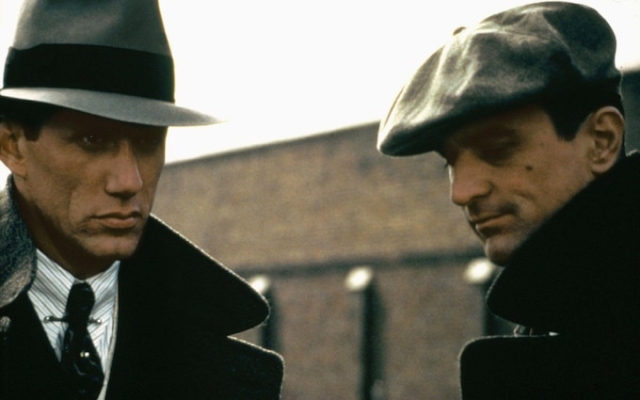 James Woods and Robert De Niro in Once Upon a Time in America Photo: Alamy
James Woods and Robert De Niro in Once Upon a Time in America Photo: Alamy
When Sergio Leone premiered his gangster epic Once Upon a Time in America at the Cannes Film Festival on May 23, 1984, there was a hard-won sense of achievement. He hasn't released a movie since 1971's You're a Sucker, Duck! and this, his seventh picture, was his most ambitious undertaking. The film's running time was 229 minutes — trimmed from the original version of 269 minutes, given rumors that Leone's beloved version of the film was almost six hours long — and was nearly two decades in the making.
The director considered it nothing less than his magnum opus and, supported by a star-studded cast that included Robert De Niro and James Woods, the film's rapturous reception at Cannes seemed to indicate that that his enormous efforts had fully paid off. Then it was released in America and things got really bad.
Today, Once Upon a Time in America is considered not only to be perhaps Leone's finest achievement (no small feat for a director who also directed The Good, the Bad and the Ugly and Once Upon a Time in the West), but also an endlessly fascinating and mysterious film. deconstruction of a gangster film. The film takes place over three different time periods that flow into each other with the chaotic logic of a dream. It features scenes of almost unwatchable brutality (including one of the most disturbing rape scenes in cinema) combined with enchanting beauty and extraordinary style.
Roughly speaking, it tells the story of four Jewish American friends who rose to the top of organized crime in New York City in the thirties, before a series of surreal, perhaps hallucinatory events broke the gang and saw them catapulted into the late sixties. However, no single review can truly do justice to Leone's expansive, extraordinary vision, which seamlessly moves from scenes of black comedy to epic romantic drama to something that defies categorization that is stranger than a dozen sci-fi films. films. It can be frustrating and opaque in places, but it is truly unforgettable.
Woods said it was his favorite film of the dozens he has made: “My favorite experience was without a doubt making Once Upon a Time in America.” I loved Sergio Leone. He was the most wonderful man, a director without equal, and a friend whose passing I still mourn.» However, compared to The Godfather — the film most often set alongside it — it remains little known, perhaps due to its commercial failure upon release and the various edits that were released at different times. But it's time to let it become a cinematic classic that may even surpass its more famous predecessor — or at least be talked about in the same breath.
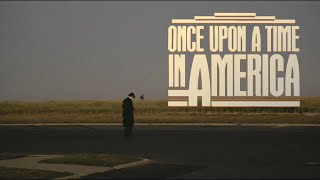
When Leone was growing up as a child in Italy in the 1930s and 1940s, he had an idealized, glamorous version of America in his mind. As he said at the time of Once Upon a Time’s release: “When I was a child, America existed in my imagination. I think America existed in the imagination of all the kids who bought comic books, read James Fenimore Cooper and Louisa May Alcott, and watched the movies. America is a resolute rejection of the Old World, the world of adults… It was mainly after the war that I became completely fascinated by what was happening in Hollywood. The Yankee army brought a million films to Italy that had never been dubbed into Italian. I must have seen three hundred films a month for two or three years straight. Westerns, comedies, gangster films, war stories – whatever there was.”
It was this heightened, fantastical version of the country that fascinated Leone and which he tried to portray in his Dollars trilogy early in his career, namely A Fistful of Dollars, For a Few Dollars More and The Good, the Bad and the Ugly. Ugly. All three films were critically acclaimed and commercially successful, although many noted the irony of cynical, revisionist films about the American West shot on location in Spain by an Italian director who had never visited the United States.
It was not until 1967 that Leone first traveled to America for cinematic purposes, when he managed to seduce American star Henry Fonda to play the satanic villain Frank in his fifth film, Once Upon a Time in the West. It would also be his first film partially shot in this country, close to John Ford's favorite haunt of Monument Valley, although much of it was again filmed in Spain and Rome.
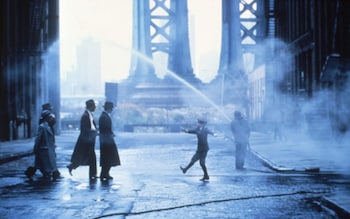 Scene from the movie “Once Upon a Time in America” Credits: ScreenProd/Photononstop/Alamy Stock Photo
Scene from the movie “Once Upon a Time in America” Credits: ScreenProd/Photononstop/Alamy Stock Photo
However, even as Leone was making his richest and most complex Western, he had already decided to abandon the genre with which he was synonymous and instead pursue an entirely different type of film. He discovered the Harry Gray novel The Hoods (the pseudonym of former gangster Herschel Goldberg) and declared himself captivated, saying: “It was a perfect and loving cinematic anthem. The story of these Jewish gangsters—three times unsuccessful and five times determined to defy the gods—remembers me like the curse of the Mummy in the old Boris Karloff movie. I wanted to make this film and no other.”
Leone turned down Paramount Pictures' offer to direct The Godfather (at the time, he was a far more famous director than the film's future director, Francis Ford Coppola) in order to focus on developing his magnum opus. But his development was hampered. First, the rights had already been bought by other studios («we finally managed, with intelligence and a lot of dollars, to take the rights away from the rightful owners»), and second, there was the question of who to hire to turn Gray's book into a screenplay. Leone had co-written all of his earlier films, but this quintessentially American story deserved a quintessentially American screenwriter. But who to turn to in what Leone called «a hellish season of screenwriting»?
Meet Norman Mailer, the absurdly macho author of such books as The Naked and the Dead and The American Dream, and winner of the Pulitzer Prize for his 1968 non-fiction book Armies of the Night, an account of the 1967 anti-Vietnam uprising. rally. Leone hired him, and Mailer obediently barricaded himself in a Roman hotel room with his typewriter, a box of cigars and a bottle of whiskey, but the results were disappointing. The director sighed, «I'm sorry to say, but he just created a version of Mickey Mouse.» Instead, Leone turned to a team of Italian writers who could create something closer to what he wanted, as well as take on the role of co-writer.
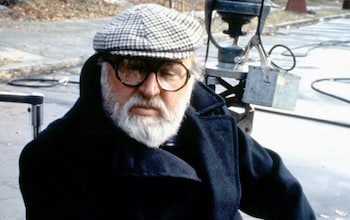 Visionary: Sergio Leone on set Photo: Allstar Picture Library Ltd/Alamy Stock Photo
Visionary: Sergio Leone on set Photo: Allstar Picture Library Ltd/Alamy Stock Photo
The script was completed and Leone now began to think about casting. His original intention — somewhat watered down in the finished film — was to use hip young actors to portray main characters Max and Noodles in their criminal pomp in twenties and thirties America, and then cast older veterans as their sixties equivalents . He considered casting pre-controversy Richard Dreyfuss to play Noodles, who would then be played as the older man by James Cagney, the original Scarface himself. Meanwhile, Noodles' friend Max will be played by another controversial actor, Gérard Depardieu, and legendary French star Jean Gabin, best known for his role in Jean Renoir's Grand Illusion, will play the elderly Max.
This casting, first proposed by Leone in the mid-seventies, would have been interesting, but fell through for several reasons, not least because Gabin died in 1976 and also because Cagney had almost retired from acting, having not made a film since 1961 . (He would return only once, for a role in Milos Forman's Ragtime, in 1984.) The film continued to be developed throughout the Seventies, but looked doomed, another passion project that was crushed by the demands of commercial realities. And then luck saved the film and brought it to life.
Arnon Milchan may not be a household name, but he deserves credit for bringing some of the most interesting and unusual films of the last four decades to theaters through his production company, Regency Enterprises. If it weren't for Milchan, such risky films as «Fight Club», «Brazil» and «Birdman» would hardly have been possible. He cut his teeth producing Martin Scorsese's The King of Comedy in 1982 — another flop that was later rightfully recognized as a classic — and when Leone met him, he was delighted and relieved that someone understood how to make his dream come true on screen.
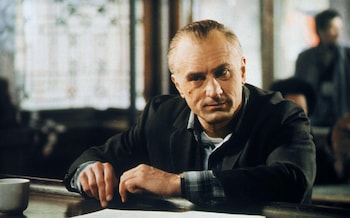 Robert De Niro in Once Upon a Time in America Photo: Allstar Picture Library Ltd/Alamy Stock Photo
Robert De Niro in Once Upon a Time in America Photo: Allstar Picture Library Ltd/Alamy Stock Photo
A new cast was assembled. It featured everyone from Milchan's friend De Niro, who was then delighted by the success of a series of films including Taxi Driver and Raging Bull, for which he won an Oscar, and Woods, to such young stars as Joe Pesci and Elizabeth McGovern. Meanwhile, iconic Tuesday Weld played the morally complex role of Carol, Max and Noodles' love interest. She brought an appropriately sexualized approach to the role, befitting a woman who said, turning down the central role in Stanley Kubrick's Lolita: “I didn't have to play her. I was Lolita.»
The film began production in June 1982 in New York and had a long and complex shooting schedule spanning several different countries, including America, France, Italy and Canada. At times, Leone's instincts gravitated toward Europeans—a key scene involving Grand Central was filmed in Paris at the Gare du Nord—but armed with a sizeable $30 million budget, he was able to realize his vision and completed filming in April. 1983.
His original intention was to release his film in two three-hour parts, similar to The Godfather and The Godfather Part II, but his producers, The Ladd Company, objected, fearing that it would lack commercial advertising. address. So Leone reluctantly edited his film down to 229 minutes, which premiered at Cannes.
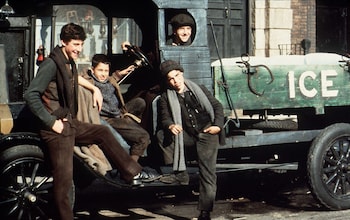 The film follows a group of Brooklyn gangsters from childhood to adulthood. Photo: Maximum Film/Alamy Stock Photo
The film follows a group of Brooklyn gangsters from childhood to adulthood. Photo: Maximum Film/Alamy Stock Photo
This version received great success at its first showing. But the studio, horrified, expecting a straight-up gangster epic like The Godfather, looked at it and decided it couldn't be released in its current format. They hired Zach Stenberg, who would later win an Oscar for editing The Matrix but was best known at the time for his work on Police Academy, to cut its runtime to 144 minutes, citing a contract clause that required Leone can save the final version only if his photograph appeared no more than 165 minutes later.
To be on the safe side, Stenberg's editing, done without Leone's consent, rearranged the film chronologically, removed most of the scenes featuring the gangsters as children, and cut out many moments that helped explain what was happening.
The results were disastrous. The film stood or fell critically, and Roger Ebert, who saw the original at Cannes and called it a masterpiece, gave the cut version one star and wrote that it was “an incomprehensible mess without texture, timing, mood or meaning.” Meanwhile, Pauline Kael perhaps said it best when she said, “I don’t think I’ve ever seen a worse case of mutilation.” Even its obvious technical achievements, like Ennio Morricone’s haunting score and Tonino Della Colli’s breathtaking cinematography, were seen as aids to its now pointless brevity.
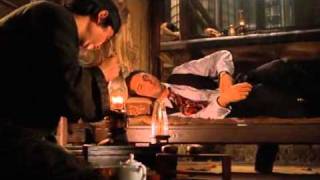
Woods, never one to mince his words, called it a “stupid thing to do” and said: “I hope they burn the fucking negativity… I mean, do you think I was suicidal? The critics trashed the film, as they should have. It was dead in the fucking water.” It bombed at the box office, grossing just $5.5 million, and a disappointed Leone dismissed the theatrical version as not the film he had made. He died six years later, in 1990, before he could fulfill his plans to reunite with De Niro to make an epic war film about the siege of Leningrad: his loss is mourned by film buffs to this day.
However, there was happier news regarding his latest great work. The compromised theatrical release version has now completely disappeared from circulation, and the most frequently viewed version of the film is the Leone-approved 229-minute version. However, thanks to the intervention of Martin Scorsese, a noted fan of the film, an even longer version was created, closer to the 269-minute version that Leone originally signed up for, which premiered at Cannes in 2012.
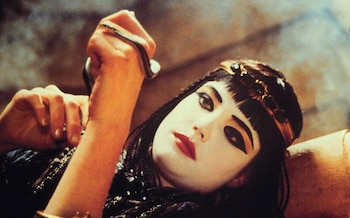 Elizabeth McGovern in Once Upon a Time in America Photo: Maximum Film/Alamy Stock Photo
Elizabeth McGovern in Once Upon a Time in America Photo: Maximum Film/Alamy Stock Photo
This is not a perfect film. It's clear that he's been accused of misogyny and sexism, and not just the hard-to-watch rape scenes (when a frustrated and angry Max De Niro attacks his future lover Deborah in the back seat of a car, it's a truly grotesque moment that removes any viewer sympathy from character), but also in the objectification of women throughout, including young Jennifer Connelly as little Deborah. Leone dismissed this in a contemporary interview, stating, «I have nothing against women, and, in fact, my best friends are women,» and also suggested that he was contemplating a female-centric film in the future.
But amidst all this, Once Upon a Time in America remains one of those rare and unforgettable films that feels like falling into a dream, opium-induced or not. It features all of Leone's signature action sequences, brutal fight scenes and heartbreakingly tragic deaths, not to mention a centerpiece that actually dramatizes The Great Gatsby far better than any of the official adaptations of the book, but also manages to convey the loss of friendship and the inevitability of aging with poetic brilliance.
Leone himself said about his film: Once Upon a Time in America is my best film, bar none — I swear — and I knew it would be so from the moment I picked up Harry Gray's book. I'm glad I did it, although I was as tense as Dick Tracy's jaw during filming. This always happens. Making a movie is terrible, but making a movie is amazing.” It's a full-fledged ten-course feast, and 40 years later, only the most tawdry viewer would be unable to enjoy its splendor.




















































Свежие комментарии